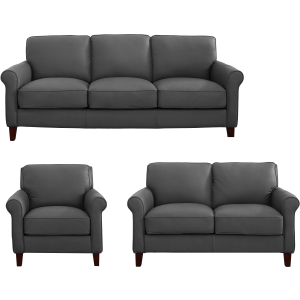Different elements are considered to forestall the furniture in the workplace, but not many of them are made sense of beneath;
Light
Presumably, the most straightforward natural issue to comprehend and determine for furniture is harm from light. What we typically call “light” is simply an extremely limited part of the peculiarity called “electromagnetic radiation” that compares to the awareness of our eyes.
Light is a wellspring of energy. Light collaborates with all that it enlightens, and light energy is straightforwardly translatable to harm furniture surfaces. How much that harm relies upon the power and variety in pegler commercial . Splendid light is more harmful than faint light, blue light is more harmful than red light.
Generally, light harm appears as staining, typically dying. Light prompts dying and debasement in many parts of furniture: coatings, whether straightforward or polychrome; the actual wood; and particularly upholstery materials. By and large, light harm is total and long-lasting. Answering the potential for light harm is generally basic and can likewise be clear: when the furniture isn’t being used, it is best left in obscurity. In any event, when furniture is being used and in the light, harm can be diminished through normal gadgets like window shades, drapes, and screens for assurance from direct daylight or raised light levels. Bright channel movies can be utilized to obstruct the most harmful light frequencies if there is worry over the shade of the light, for instance, light from bright light bulbs or bright radiation from daylight. For expanded times of non-use, misty residue covers are suggested.
The main thing to remember is the connection between light and harm to furniture surfaces. However long there is light, there will be light harm relative to its force and openness time. In any case, the use of straightforward measures can go far in decreasing harm.
Relative Humidity

Maybe the best natural harm to furniture comes from wide swings in family member stickiness (RH). Wood retains and desorbs water as relative stickiness rises and falls, and in doing so it grows and recoils. Exacerbating the situation, it extends and contracts inconsistent along various grain headings. This trademark stays as long as wood exists, whether it is new from the lumberyard or millennia old from an old burial chamber. As dampness changes, the parts of wooden articles are consistently moving back and forth against one another. This strain frequently brings about pieces of furniture done fitting together intently or becoming contorted or parting from their interior burdens.
Wood isn’t the main furniture part to experience the ill effects of dampness swings. As they age and crumble, coatings become more unyielding. Since the wood keeps on moving with moistness changes, and the covering turns out to be progressively fragile with time, dampness changes, in the long run, make the coatings start cracking or isolating from the substrate. This issue turns out to be especially serious when coatings are probably going to be less adaptable all along, for example, painted surfaces or plating, which is frequently applied over an inflexible ground called gesso. The reaction to relative dampness changes starts with deciding the yearly normal RH for your specific environment. Then, at that point, attempt to keep the RH in the space where your furniture is as near that normal as could be expected, for the most part inside around 10% up or down. This soundness can be accomplished through de-humidifying in the late spring and humidifying in the colder time of year. Know that raising the temperature brings down the mugginess as well as the other way around. Accordingly, current warming frameworks, which can drive down inside RH in the colder time of year, perpetually cause issues for furniture.


